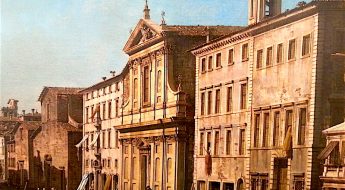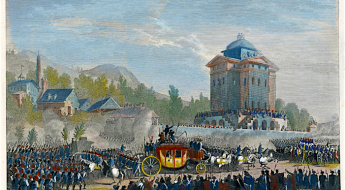Part 3.5 is the last part of Chapter 3.
A Childhood at Versailles consists of the first 5 chapters of the memoirs of Mme de Boigne (1781-1866), née Adèle d’Osmond, who was a French salon hostess and writer. She was born in the Château de Versailles and lived at the court of Louis XVI and Marie-Antoinette until her family fled to England during the Revolution. Later in her long life, she married a rich soldier of fortune 30 years her senior, hosted a brilliant salon in Paris, and became an intimate of the last French queen, Marie-Amélie, consort of King Louis Philippe (r. 1830-1848). Childless herself, Mme de Boigne addressed her memoirs to her grandnephew. The memoirs were not published until 1907, under the title Récits d’une tante, or An Aunt’s Tales. They’ve never been published in English, as far as I know, so I’ve decided to translate the first 5 chapters, the ones that take place mainly at Versailles, and post them here on this blog for interested readers to enjoy for free.
The chapters are quite lengthy, so I’ve broken each one into several parts. In Part 3.5, Mme de Boigne records her family’s reception in England, which got off to a good start when they bumped into Mrs. Fitzherbert on the pier at Brighton.
A Childhood at Versailles, Chapter 3, Part 5 (3.5)
I have little recollection of this voyage. I recall only the impression that the sight of the ocean caused me. Child that I was, I devoted to it from that time a veneration that has never waned. Its grey and green shades have a charm for me that the beautiful blue waters of the Mediterranean have not made me unfaithful to.
We debarked at Brighton. As chance would have it, my mother encountered Mrs. Fitzherbert, who was walking on the pier. Some years before, fleeing the Prince of Wales’s attentions, she had come to Paris. My mother, who was her cousin, had often seen her there. Since then, the blessing of a Catholic priest having sanctified her relations with the prince, without making them legal, she was living with him in an intimacy to which both of them affected to give the most conjugal forms. They lived as simple commoners in a small house in Brighton. My parents were received there with alacrity, and this circumstance led them to spend a few days.
I remember being taken to see Mrs. Fitzherbert one morning, and she showed us the prince’s dressing room, where there was a large table all covered in shoe buckles. I cried out on seeing them and Mrs. Fitzherbert smilingly opened a big armoire which was also full of them. There were shoe buckles for every day of the year. It was part of the elegance of the time, and the Prince of Wales was the most elegant of the elegant men. This collection of buckles struck my childish imagination, and for a long time the Prince of Wales only figured in it as the proprietor of all those buckles.
My parents were very well received in England. The French rarely went there in those days. My mother was a pretty woman of fashion, and her family loaded her with kind attentions. We went to spend Christmas with the Earl of Winchilsea on his beautiful estate at Burleigh. It seems to me now that this way of life was very magnificent, but I was too accustomed to great establishments to think much of it.
Lord Winchilsea’s mother, Lady Charlotte Finch, was the governess of the English princesses. I saw the three youngest of them several times at her home. They were much older than I and they did not please me at all. Princess Amelia called me little thing, which shocked me infinitely. I spoke English very well, but I did not yet know that it was a term of affection.20
Notes:
20. See the letters written by Madame Adélaïde to the Marquise d’Osmond during this trip in the Pièces justificatives.


















Leave a Comment